|
For a restorer of furniture, as for any
person is to use chemicals, it is essential to know the nature and extent of
the risks related to their storage and use, knowing how to read labels and
chemical hazard symbols.
The Regulation (EC) No. 1272/2008, of the European Parliament an Council,
introduced new criteria for the classification of risks and new hazard
pictograms, entered into a red rhombus-shaped frame. The deadline for the
entry into force of the latter is scheduled for 1 June 2015, while it is
possible, since 2010 alongside the those already existing, previously set
out in Annex II to Directive 67/548/EEC, to use the new labels.
These symbols on the labels, serve to
recognize the degree of danger of the product
|
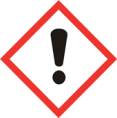 |
 |
HARMFUL (Xn)
Harmful by inhalation, ingestion or contact with skin. Possibility of irreversible effects from exposures occasional, repeated or prolonged. For inhalation, ingestion or skin penetration may involve limited health risks. Precautions: Avoid contact, including inhalation of vapors and, if you feel unwell, seek medical advice.
|
|
 |
IRRITANT (Xi)
This symbol indicates substances that may have irritating effect on skin, eyes and respiratory tract. Although it is not corrosive, the immediate, prolonged or repeated contact with the skin and mucous membrane,
can produce inflammation. Precautions: Do not breathe vapors and avoid contact with skin.
|
|
 |
 |
EXTREMELY FLAMMABLE (F +)
-
Liquids with a flash point lower than 0° C and boiling point/boiling point of beginning not more than 35° C. In contact with air at normal temperature without any application of energy, it can heat up and ignite. In the solid state can easily catch fire brief contact with a source of ignition and continue to burn or to be consumed after removal of the source of ignition.
Precautions: Keep away from sources of ignition. -
Gaseous substances which are flammable in air at room temperature and atmospheric pressure. Precautions: Avoid formation of flammable gas-air mixtures and keep away from sources of ignition.
|
|
 |
HIGHLY FLAMMABLE (F)
-
Substances liable to spontaneous combustion. Flammable chemicals in the air. - Precautions: Keep away from sources of ignition.
-
Chemicals which in contact with water form quickly flammable gases. Precautions: Avoid contact with moisture or water.
-
Liquids with a flash point below 21° C. Precautions: Keep away from open flames, sparks and heat sources.
-
Solid substances which ignite easily after brief contact with ignition sources. Precautions: Keep away from sources of ignition.
|
|
 |
 |
COMBUSTION (O)
Oxidising substances which can ignite combustible material or fuel fires already in place, making it more difficult to extinguish.
A contact with other substances, particularly flammable una forte causes exothermic reaction. Precautions: Keep away from combustible material.
|
|
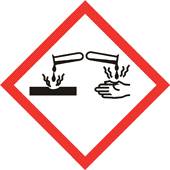 |
 |
Corrosive (C)
Chemicals that destroy both living tissue contact for that equipment. In contact with living tissues can exert a destructive action on them.
Precautions: Do not breathe vapors and avoid contact with skin, eyes and clothing.
|
|
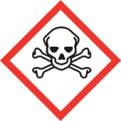
GHS06
Acute toxicity
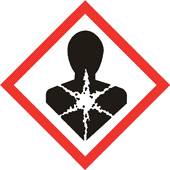
GHS08
long-term toxic products
|


|
VERY TOXIC (T +) and TOXIC (T)
Are very dangerous to human health by inhalation, ingestion or contact with the skin, which can also cause death. Possibility of irreversible effects from exposures occasional, repeated or prolonged. For inhalation, ingestion or skin penetration can pose serious, acute or chronic, or even death. Precautions: Avoid contact, including inhalation of vapors and, if you feel unwell, seek medical advice immediately.
In particular, in the new
classification, among the long-term toxic products include those that which
may result in:
Respiratory sensitization,
Germ cell mutagenicity,
Carcinogenicity,
Reproductive toxicity,
Specific target organ toxicity for
single and repeated exposure,
Aspiration hazard.
|
|
 |
 |
EXPLOSIVE (E)
This symbol indicates products that can explode under certain conditions. Which may explode under the effect of flame or which is sensitive to shocks or friction than dinitrobenzene. Precautions: Avoid shock, friction, sparks, heat.
|
|
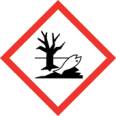 |
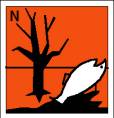 |
DANGEROUS FOR THE ENVIRONMENT (N)
Substances harmful to the aquatic environment (aquatic organisms, water), and for the terrestrial environment (fauna, flora, atmosphere) or who have long-term harmful effect. May be harmful to ecosystems, the ozone layer and the environment in general. Precautions: Do not release to the environment.
|
|
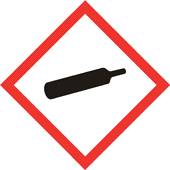 |
GAS UNDER PRESSURE (new)
Indicates that the product is a gas
under pressure in a container and may explode under the effect of heat.
These are compressed gases, dissolved gases and liquefied gases
The latter can, as such, be responsible for burns or injuries related said
cryogenic. |
|
The
portal Restauromobile
Are you a restorer, a carpenter, a craftsman of
wood or an antique dealer or a private person and would like to submit
your work or sell furniture or antiques, or sell items, equipment and
materials for carpenters and restorers?
Register on the site and enter your free ads.
The portal has also, in the antiques & surroundings section:
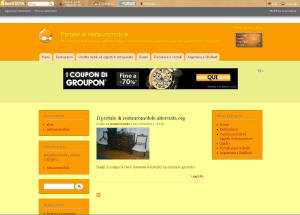
|



















